Understanding how to face roll for lymphatic drainage can transform your daily skincare routine into a therapeutic self-care practice. The lymphatic system plays a crucial role in removing toxins and excess fluid from facial tissues, but it sometimes needs gentle encouragement to function optimally. When lymphatic flow becomes sluggish, you may notice increased puffiness, particularly around the eyes, or a generally lackluster complexion.
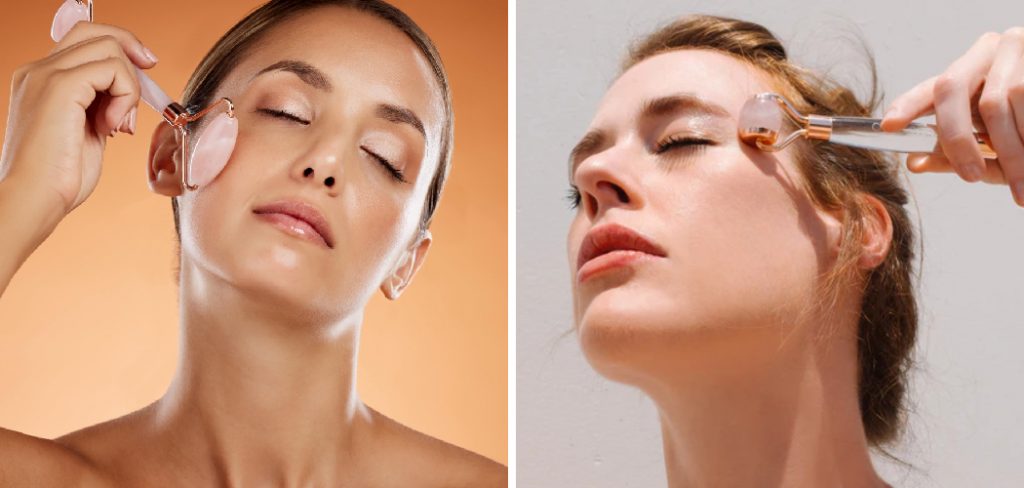
This comprehensive guide will teach you professional techniques for effective lymphatic drainage through face rolling. You’ll discover how proper tool selection, correct rolling directions, and consistent practice can help reduce facial swelling, improve skin tone, and create a more sculpted appearance. Whether you’re new to face rolling or looking to refine your technique, these expert tips will help you achieve the best possible results from this time-tested wellness practice.
Why Face Rolling for Lymphatic Drainage Is Essential for Healthy Skin
Face rolling specifically targets the lymphatic system, which is responsible for filtering toxins and maintaining proper fluid balance in facial tissues. Unlike the cardiovascular system, the lymphatic system lacks a central pump and relies on external movement to circulate lymph fluid effectively.
Modern lifestyle factors like stress, poor sleep, excessive salt intake, and prolonged screen time can contribute to lymphatic congestion, resulting in facial puffiness and dull skin. Regular face rolling provides the gentle stimulation needed to encourage lymphatic flow, helping your skin appear more radiant and defined while supporting your body’s natural detoxification processes.
Step 1: Prepare Your Skin and Tools for Optimal Results
Proper preparation sets the foundation for effective lymphatic drainage through face rolling. Begin by thoroughly cleansing your face with a gentle cleanser to remove makeup, dirt, and oils that could interfere with the rolling process. Pat your skin dry with a clean towel, leaving it slightly damp to help the roller glide smoothly.
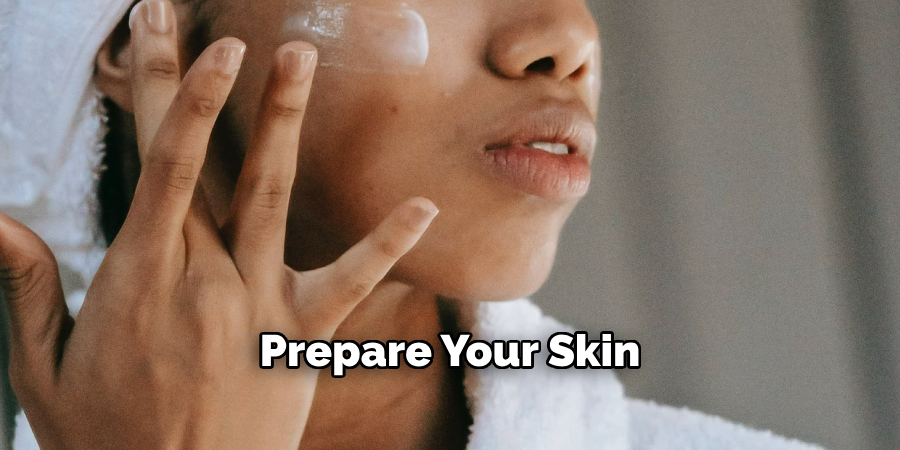
Apply a facial oil, serum, or moisturizer to create the ideal slip for your tool – this prevents tugging on delicate skin and enhances the massage benefits. Choose products with lymphatic-supporting ingredients like green tea, cucumber, or caffeine for added benefits. Clean your face roller with rubbing alcohol or a gentle soap solution to ensure hygiene, then allow it to air dry completely before use.
Step 2: Start with Gentle Neck Movements to Open Lymphatic Pathways
Beginning your facial massage routine at the neck is crucial for effective lymphatic drainage, as this area contains major lymph nodes that serve as drainage points for facial fluid. Hold your face roller at the base of your neck and roll gently upward toward your jawline using light pressure.
Work from the center of your throat outward toward your ears, covering the entire neck area with slow, deliberate movements. Repeat each stroke 5-7 times, maintaining consistent pressure throughout the motion. This foundational step opens the lymphatic pathways and prepares your system to process the fluid that will be mobilized from your facial tissues during the remainder of your session. The neck work is often overlooked but remains essential for optimal results.
Step 3: Address the Jawline and Lower Face with Upward Rolling Motions
The jawline area frequently holds tension and can benefit significantly from targeted lymphatic drainage techniques. Place your face roller at the center of your chin and roll upward and outward toward your earlobes, following the natural contour of your jawline. Apply gentle but firm pressure, allowing the tool to massage deeply into the tissues without causing discomfort.
Focus on areas where you tend to hold stress, such as the jaw muscles near your ears, spending extra time to encourage relaxation and fluid movement. Work methodically from your chin to your ears, covering the entire lower face area. This technique helps reduce the appearance of jowls, defines the jawline, and can alleviate tension from teeth grinding or jaw clenching habits that many people develop unconsciously.
Step 4: Target Under-Eye Areas with Extra Gentle Techniques
The delicate under-eye area requires special attention and modified pressure when learning how to face roll for lymphatic drainage effectively. Use the smaller end of your roller or switch to a gentler tool designed specifically for this sensitive region. Begin at the inner corner of your eye and roll outward toward your temple, following the natural curve of your orbital bone. Apply minimal pressure – the weight of the tool should be sufficient for this area.
Focus on reducing puffiness and dark circles by encouraging lymphatic flow away from the eye area toward the lymph nodes near your ears. Work slowly and deliberately, repeating each stroke 3-5 times per eye. This gentle approach helps minimize morning puffiness while supporting circulation in an area prone to fluid retention.
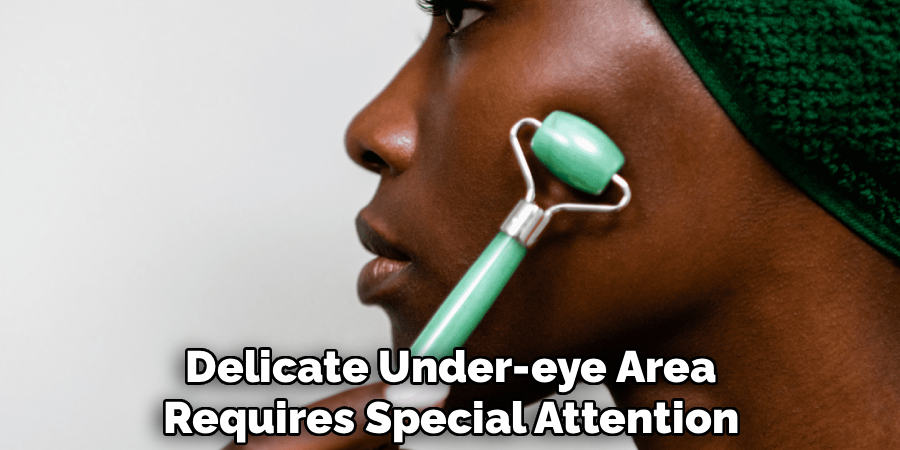
Step 5: Work on Cheek Contouring with Directional Rolling
Proper cheek rolling techniques can enhance your natural facial contours while promoting effective lymphatic drainage throughout the mid-face area. Start at the corners of your mouth and roll upward and outward toward your ears, following the natural lift of your cheekbones. Use firm but comfortable pressure, allowing the roller to glide smoothly across your skin surface. Pay particular attention to the area just below your cheekbones, where lymphatic drainage can help create more defined facial contours.
Work in sections, covering your entire cheek area systematically from your nose to your hairline. The upward and outward motions help counteract gravity’s effects on facial tissues while encouraging proper lymphatic flow toward the drainage points near your ears, contributing to a more lifted and sculpted appearance.
Step 6: Address Forehead Tension and Promote Lymphatic Flow
Forehead rolling helps release tension from facial expressions while promoting lymphatic drainage in the upper face region. Begin at the center of your forehead, just above your eyebrows, and roll upward toward your hairline using smooth, even strokes. Work systematically across your entire forehead, moving from the center outward toward your temples. Apply moderate pressure to help release muscle tension that can contribute to headaches and expression lines.
Focus extra attention on areas where you tend to furrow your brow or hold stress. The upward rolling motion helps counteract the downward pull of gravity while encouraging lymphatic fluid to flow toward the lymph nodes located near your ears and temples. This technique also helps improve circulation to the forehead area, promoting a healthy, radiant complexion.
Step 7: Complete with Temple and Ear Area Drainage
Finishing your face rolling session by focusing on the temple and ear areas helps direct all the mobilized lymphatic fluid toward the major drainage points in your neck. Use gentle circular motions around your temples, then roll from your temples down toward your ears and neck. This final step ensures that the lymphatic fluid you’ve encouraged to move during your session has clear pathways for elimination from your facial tissues.
Spend extra time on this area if you experience frequent headaches or jaw tension, as the temple region often holds significant stress. The ear area contains numerous lymph nodes that serve as important drainage points for facial lymphatic fluid, making this final step crucial for maximizing the benefits of your entire routine.
Step 8: Seal Your Session with Proper Aftercare
Completing your lymphatic drainage session with appropriate aftercare helps maximize the benefits and supports your skin’s recovery from the massage. Apply a hydrating moisturizer or serum to nourish your skin and lock in the benefits of your facial massage routine. Clean your face roller immediately after use with rubbing alcohol or soap and water to maintain hygiene and prevent bacteria buildup.
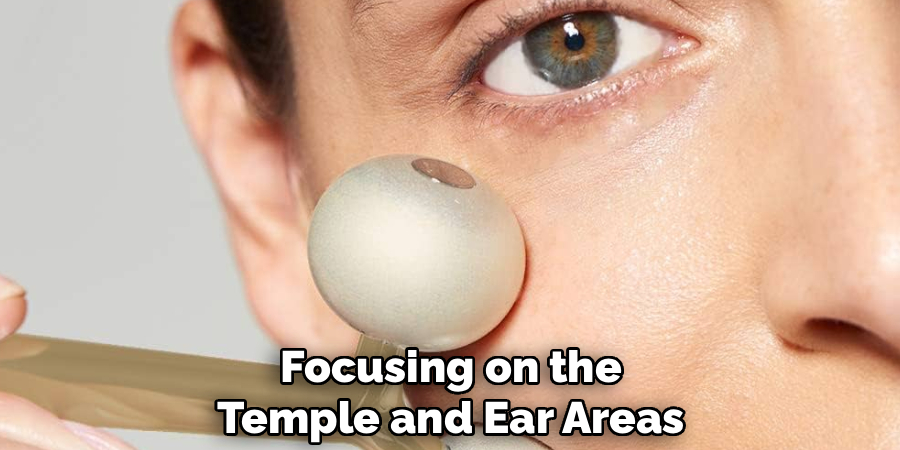
Store your tool in a clean, dry location to preserve its quality and effectiveness. How to face roll for lymphatic drainage includes this important maintenance step that many people overlook. Consider drinking extra water after your session to support your body’s natural detoxification processes and help flush the mobilized toxins from your system. Document any changes you notice in your skin’s appearance or how you feel, as this can help you track your progress over time.
Frequently Asked Questions
How Often Should I Face Roll for Lymphatic Drainage?
For optimal lymphatic drainage benefits, face rolling should be performed 3-5 times per week, with daily use being ideal for most people. Consistency is more important than frequency, so it’s better to roll 3 times weekly for several months than to roll daily for just a few weeks. Morning sessions work particularly well for reducing overnight puffiness, while evening sessions can help relax facial muscles and prepare your skin for nighttime repair processes.
What Type of Face Roller Is Best for Lymphatic Drainage?
Jade and rose quartz rollers are popular choices, offering cooling properties that help reduce inflammation while providing effective lymphatic stimulation. Stainless steel options stay cooler longer and are easier to sanitize. The key features to look for include:
- Smooth, well-crafted rolling stones that glide easily
- Dual-sided design with larger and smaller rollers
- Sturdy construction that won’t break with regular use
- Easy-to-clean materials for maintaining hygiene
Can Face Rolling Replace Professional Lymphatic Drainage Treatments?
While face rolling provides excellent daily maintenance for lymphatic health, it cannot fully replace professional manual lymphatic drainage performed by trained therapists. Professional treatments offer deeper, more comprehensive lymphatic stimulation and can address specific concerns more effectively. However, regular face rolling serves as an excellent complement to professional treatments, helping maintain results between sessions and providing ongoing lymphatic support as part of your daily wellness routine.
Are There Any Side Effects or Risks from Face Rolling?
Face rolling is generally safe for most people when performed correctly with appropriate pressure and clean tools. However, some individuals may experience temporary redness immediately after rolling, which typically subsides within 30 minutes. Avoid face rolling if you have:
- Active acne breakouts or open wounds
- Recent facial procedures or injections
- Skin conditions like eczema or rosacea flare-ups
- Fever or illness affecting your lymphatic system
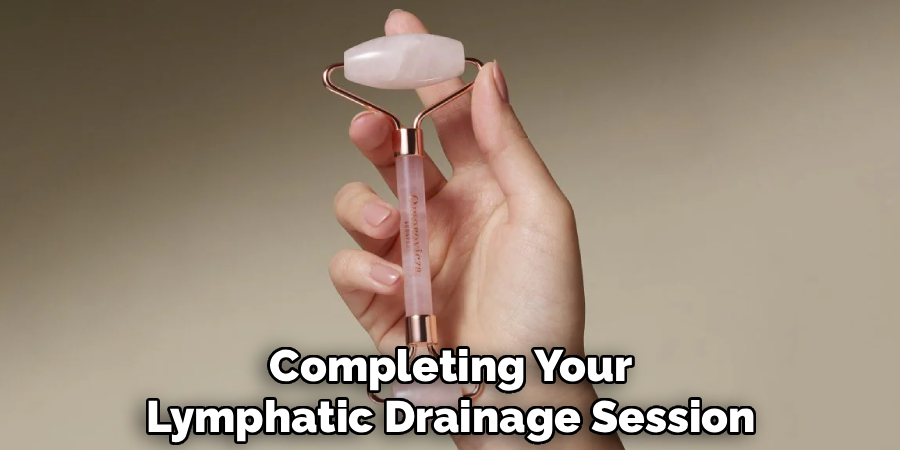
How Long Does It Take to See Results from Lymphatic Face Rolling?
Many people notice immediate improvements in puffiness and skin radiance after their first session, particularly when rolling in the morning. For long-term benefits like improved skin texture, reduced fine lines, and enhanced facial contours, consistent practice for 4-8 weeks typically produces noticeable results. The timeline varies based on individual factors including age, skin condition, lifestyle habits, and consistency of practice. Keep realistic expectations and focus on the immediate wellness benefits while allowing time for cumulative improvements to develop.
Conclusion
Mastering how to face roll for lymphatic drainage provides you with a powerful tool for maintaining healthy, radiant skin while supporting your body’s natural detoxification processes. This ancient wellness practice offers modern solutions for common skincare concerns like puffiness, dullness, and lack of definition in facial contours.
Start your lymphatic drainage journey today with confidence, knowing you have the knowledge and techniques needed to support your skin’s natural health and vitality through this time-tested wellness practice.
About the Author
Jane Hubbard is a passionate beauty expert with a wealth of experience in makeup, hair, and overall beauty techniques. After years of working as a hairdresser specialist, she followed her entrepreneurial spirit and started her own consultancy business.
Jane has always been driven by her desire to help others feel confident in their own skin, and she does this by sharing her knowledge, experiences, and practical beauty tips. Through her consultancy, she empowers individuals to embrace their unique beauty, offering tailored guidance that boosts both self-esteem and personal style.
Professional Focus
- Specializes in makeup, hairstyling, and beauty consulting.
- Provides personalized beauty advice, tips, and techniques to help individuals feel confident in their appearance.
- Dedicated to staying up-to-date with the latest industry trends and developments.
- Passionate about creating a comfortable and empowering experience for every client.
Education History
- University of Craft and Design – Bachelor of Fine Arts (BFA) in Woodworking and Furniture Design
- Woodworking Apprenticeships – Extensive hands-on training with skilled craftsmen to refine carpentry and furniture making techniques
- Online Courses & Masterclasses – Continued education in advanced woodworking techniques, design principles, and specialized tools
Expertise:
- Makeup artistry, hairstyling, and beauty consulting.
- Personalized beauty techniques to enhance confidence and self-expression.
- Educating clients on how to maintain their beauty routines at home.
